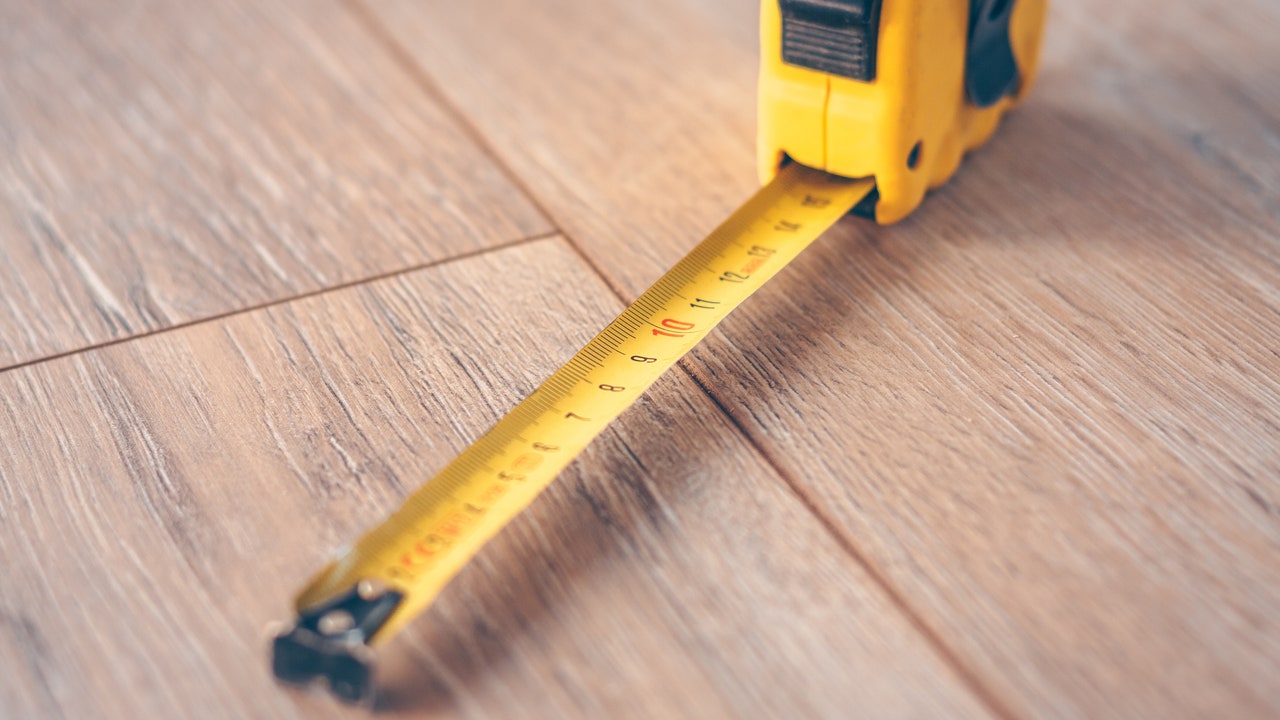If you’re looking to add a useful life skill to your metaphorical tool kit, consider learning how to calculate square footage. There are countless situations when calculating how many square feet are in a space comes in handy, from renting or buying a home to furnishing a place. The ability to calculate square footage also unlocks the door to lots of DIY projects.
To help teach you how to calculate square footage and how to use this knowledge to your advantage, we consulted two experts who work with this metric every single day: Greer Bronson, a Los Angeles–based real estate agent for AKG Christie’s International Real Estate, and Anne McDonald, a Minneapolis-based interior designer with a background in construction. Thanks to their insight, we’ve outlined everything you need to know.
What is square footage?
Photo: Getty Images
Square footage is the two-dimensional area of a space measured in square feet (which is sometimes denoted as sq. ft.). It’s the total area of every bit of floor in a room, home, or building. The term “usable square footage” is often used in real estate or interior design settings to describe the portion of the square footage that can actually be lived in, so it wouldn’t include an unfinished basement or a technical closet.
How do I calculate square footage?
Bronson and McDonald agree that, in the simplest terms, the formula for calculating square footage is length (in feet) multiplied by width (in feet). But in reality, calculating square footage is more complicated than this basic formula, because many rooms are not a perfect rectangle. So the two experts helped us break down what you need to do, step by step.
Step 1: Measure the space.
Before you can calculate the square footage of a space, you need to determine its dimensions. Dimensions typically include length, width, and height, but you won’t be using height to calculate square footage. You can easily determine the length and width of your space with a tried-and-true old-school tape measure, which is how McDonald prefers it be done. Simply stretch the measuring tape from one side of the wall to the other and record each accurate measurement on a piece of paper.
Photo: Getty Images
For rectangular rooms, measuring the length and width is straightforward because there are only two measurements to take. When it comes to oddly-shaped rooms, we recommend dividing the space into smaller, rectangular sections and measuring the dimensions of each one. Measuring each niche and nook on its own will make it easier to calculate the square footage. If you’re calculating the square footage of an entire home, you should also measure closets, hallways, and staircases.
You can also use newer technology, like a laser measuring tool or a 3D camera, to determine the dimensions of your space. Appraisers often use such tools because they have the ability to calculate square footage for you too. “There are a lot of ways to measure digitally and I’ve seen that becoming more prevalent,” Bronson says. “The top two machines that I’ve seen are the Magpie and Matterport. Magpie is a laser that you can shoot at the wall and it’ll calculate it all for you and create a floor plan. Matterport is a 3D camera that creates 3D house tours.”
Step 2: Apply the square footage formula.
Once you have measured your dimensions, you apply the formula, length x width, to determine how many square feet are in your space. If you’ve divided your space into smaller rectangles to account for an oddly shaped room, you apply this formula to the dimensions of each rectangle and then add all the products together to get the total square footage of the space.
The same formula works if you’re determining how many square inches, square yards, or square meters are in a space, assuming you’re measuring in those units of measurement. Alternatively, you can use an online square footage calculator, which does the math for you when you plug in your measurements.
Why should I know how to calculate square footage?
For renting, buying, or listing a home.
According to Bronson, knowing how to calculate square footage is crucial if you’re renting or buying a home because the listing is not always accurate. “On a lot of listings, there’ll be a caveat like, ‘Agent does not confirm square footage. Please measure yourself.’ Or something along those lines so they can’t be held liable if they’re a few square feet off,” she shares. Calculating the home’s square footage yourself will ensure it’s accurate and you’re getting what you pay for.









